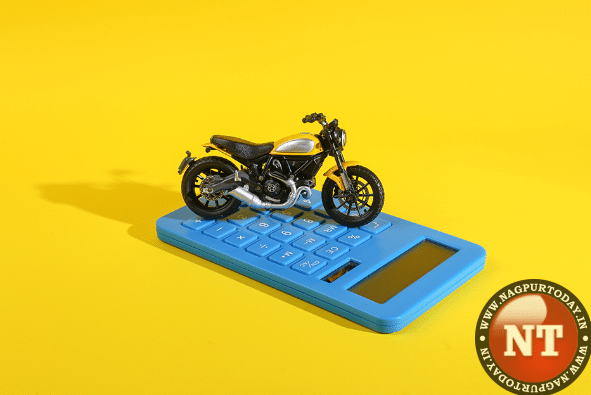If you’re in the market for a new scooter, a two-wheeler loan may be a viable financing option for you to consider. As per the statistics, a large majority of individuals in the country, approximately 75%, opt for a two-wheeler loan to purchase their desired vehicle. This is likely because two-wheeler loans are specifically designed for the purpose of purchasing scooters, making them a convenient and accessible option for many buyers. These types of loans are backed by the vehicle you’re purchasing, which means that lenders typically offer lower two-wheeler loan interest rates compared to other unsecured loans.
You could be looking at two-wheeler loan interest rates anywhere between 8.3% to 28.3%, depending on the lender and your creditworthiness. But don’t let those numbers scare you, with a two-wheeler loan, you have the flexibility to choose a repayment period that works best for your financial situation. Whether you opt for a 1-year or 7-year loan tenure, you can rest easy knowing that your monthly payments (EMIs) will be manageable.
However, it’s crucial to do your research and compare different options. Make sure to consider the processing fee, pre-payment charges, and other terms and conditions before applying for a two wheeler loan. By taking the time to shop around and find the best interest rate, you’ll be able to save money in the long run and get the best deal possible.
Two-wheeler loan Interest Rates offered by banks and NBFCs
The interest rate is the percentage of the loan that you’ll pay in addition to the principal amount. It can vary greatly depending on a number of factors, including your age, employment status, credit score, and existing debts. For example, if you’re young and have a stable job, a good credit score, and no outstanding debts, you’re more likely to qualify for a lower two-wheeler loan interest rate . On the other hand, if you’re older, have a less-than-stellar credit score, or have a lot of outstanding debts, you may be offered a higher interest rate.
It’s important to keep in mind that the two-wheeler loan interest rate directly impacts your EMI, so a lower interest rate means lower monthly payments, while a higher interest rate means higher monthly payments. When applying for a bike loan, you’ll also have the option to choose between a fixed or a floating interest rate.
A fixed rate means that the interest rate remains constant throughout the loan term, providing predictability in monthly EMIs. On the other hand, a variable interest rate, also known as a floating interest rate, is affected by market forces and can be lower or higher than the fixed rate. Due to the uncertainty that a variable interest rate can bring, most customers tend to opt for a fixed interest rate as it provides them with the clarity of knowing their EMI throughout the loan term.
Here are the two-wheeler loan interest rates offered by Banks and NBFCs.
| Bank/NBFC | Interest Rate | Loan Amount |
| Union Bank of India | 11.80% – 11.90% | ₹10 Lakhs |
| Bank of India | 7.75% – 9.25% | ₹50 Lakhs |
| State Bank of India | 17.20% – 18.95% | ₹3 Lakhs |
| Bajaj Auto Finance | 11.20% onwards | – |
| L & T Finance | 7.99% onwards | ₹20 Lakhs |
| Punjab National Bank | 10.40% onwards | ₹10 Lakhs |
| Axis Bank | 16.50% – 24% | – |
| Bank of Baroda | BRLLR + Strategic Premium + 4.25% | ₹10 Lakhs |
| HDFC Bank | 14.5% onwards | ₹5 Lakhs |
Repayment Period or Tenure
When it comes to getting a two-wheeler loan, the repayment period is a crucial factor to consider. It’s the length of time over which you’ll be paying back the loan, and it can have a big impact on the overall cost of your two-wheeler. Banks usually offer flexible repayment periods, ranging from 12-36 months, while NBFCs can offer up to 5-7 years. A shorter loan term means higher monthly payments but less overall cost for the vehicle, while a longer term may have lower monthly payments but more overall cost.
It’s important to choose a repayment period that fits your budget and won’t cause undue stress, considering your earnings, expenses and other liabilities, to ensure timely payments and avoid default.
Downpayment
The down payment is the initial payment you’ll make towards the cost of your two-wheeler, and it can vary depending on the lender’s policies. Some will require you to put down a percentage of the vehicle’s on-road price, typically between 15-30%. While this may seem like a significant amount upfront, it can actually save you money in the long run. By putting down a larger down payment, you’ll be borrowing less, which means you’ll pay less interest in the end.
On the other hand, some lenders may offer financing of up to 100% of the vehicle’s on-road cost. This might sound like a great deal at first, but keep in mind that these types of loans may come with higher two-wheeler loan interest rates, longer repayment periods, or additional fees.
Factors that affect two-wheeler loan interest rates
Factors that affect two-wheeler loan interest rates include the borrower’s credit score, income, loan amount, and tenure. Borrowers with a higher credit score, stable income, and lower loan amount and tenure can typically get better loan terms. To get the best interest rates on a two-wheeler loan, it’s important to do research and compare offers from different lenders.
Credit Score
Your credit score is a crucial factor that determines the two-wheeler loan interest rates you’ll be offered on a two-wheeler loan. A high credit score shows lenders that you’re financially responsible and trustworthy, making you more likely to get better loan terms. So, if you want to get a great deal on a two-wheeler loan, focus on improving your credit score before applying for the loan.
Debt-to-Income Ratio
Your debt-to-income ratio (DTI) is a measure of how much of your income goes towards paying off existing debts. It is a key factor that affects your two-wheeler loan interest rate. A high DTI makes you a high-risk borrower, leading to higher interest rates. To get a better deal on your loan, aim to keep your DTI ratio below 40% to be considered a low-risk borrower and secure a lower interest rate.
Employment Status and Income
If you’re looking to secure a low two-wheeler loan interest rate, being a salaried employee with a stable income can give you an edge. Lenders consider factors like income and job security when approving loans, so someone earning a higher salary, say around ₹60,000 per month, is more likely to be approved for a loan at a lower interest rate compared to someone earning a lower salary, say around ₹30,000 per month.
Basic Eligibility Criteria
Before applying for a two-wheeler loan, make sure you meet the basic eligibility criteria. This includes being at least 21 years old and not more than 65, being gainfully employed (salaried or self-employed), earning a minimum of ₹15,000 per month, and having a respectable credit score (700 or above). These requirements may vary depending on the lender, so be sure to check with them before you apply
Final Thoughts
Ready to ride off into the sunset on your shiny new two-wheeler? Before you rev up that engine, make sure you’ve considered all the important factors. From interest rates to repayment terms, each lender is different. But don’t worry, you’re not alone in this journey! Use an online bike EMI calculator to find the best repayment terms that fit your budget, and compare the interest rates of different banks and NBFCs. Once you’ve found the ideal combination of EMI, interest rate, and repayment tenure, you’re ready to choose a lender that offers the most favorable terms. And for even more convenience, you can also visit Bajaj Markets and apply for a two-wheeler loan in just a few simple steps, making your dream of owning a two-wheeler a reality.















